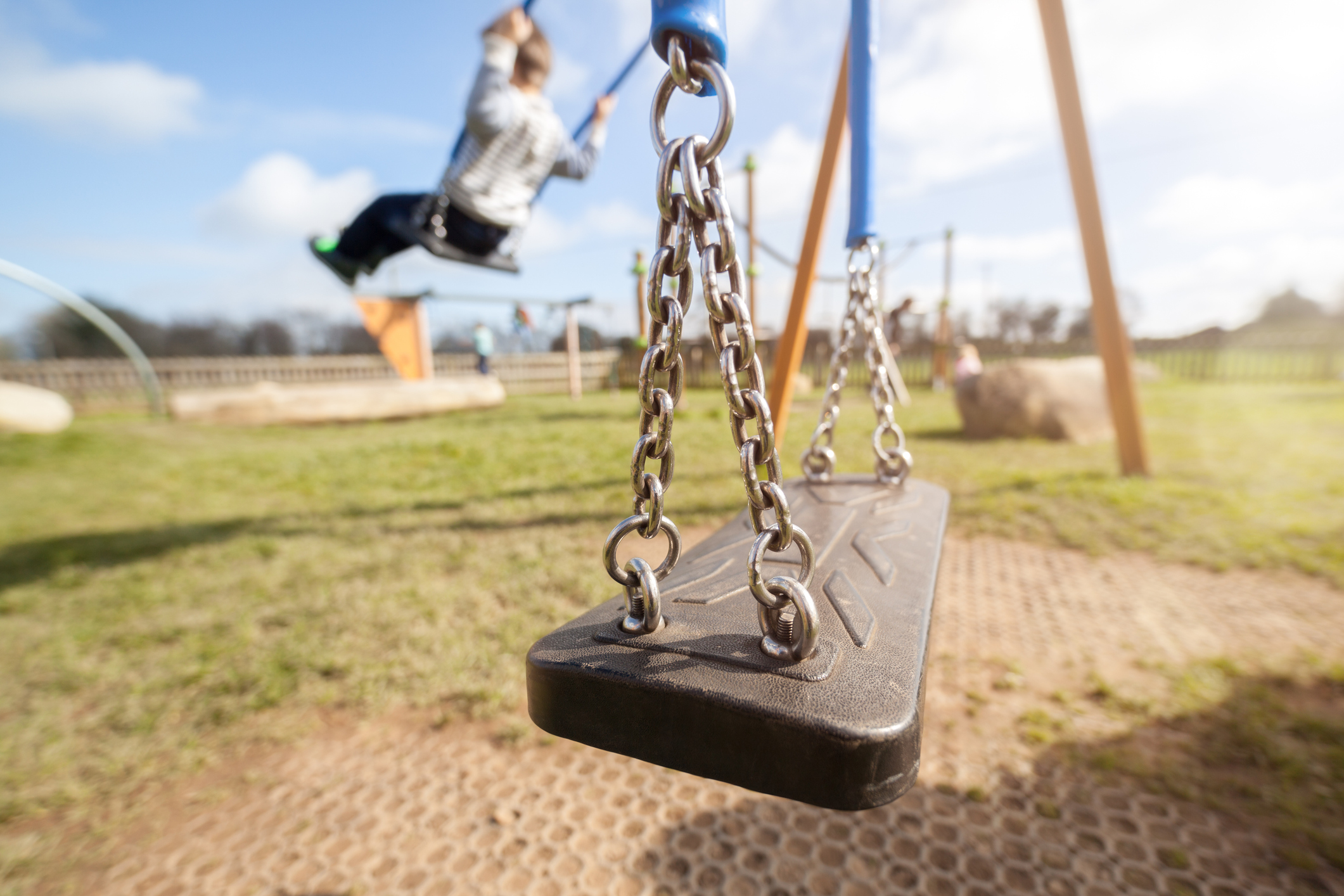If you’ve ever handed a smartphone or tablet to a toddler who just wouldn’t quiet down or found yourself trying to regulate the amount of time your children spend online, you know that the digital lives of children are in equal measure a profound source of promise and peril.
While questions about screen time are a perennial favorite topic when it comes to children, and in no way trivial, there are some much darker issues that merit discussion, but seldom make it through the din that makes the digital world such a treacherous place for young people.
Cyberbullying
 For digital non-natives who remember “wedgies,” name-calling and the guerilla warfare of school hallways, online bullying may seem like the positive evolution of an age-old problem.
For digital non-natives who remember “wedgies,” name-calling and the guerilla warfare of school hallways, online bullying may seem like the positive evolution of an age-old problem.
The Internet is a great way to connect, which isn’t always an optimal situation when you consider that children can be truly horrible to each other. To compound this unfortunate truth, the invisible environs of the online world provide bullies with an ideal place to unleash their worst tendencies with parents and guardians none the wiser. Cyberbullies are just as bad or worse than their analog predecessors.
Unlike the brick-and-mortar version, online bullying is a 24-7 problem. Children with access to internet-connected devices can send and receive abusive texts, messages, and IMs any time of day.
Studies conducted by the National Center for Education Statistics and Bureau for Justice suggest that roughly 15 percent of high school-aged children have experienced cyberbullying in some form, with many victims reporting depression, anxiety and even suicidal ideation.
What you can do about it:
Talk to your children about bullying. Create a safe space for discussions about what might be going on behind the digital door of their devices. And don’t assume your child is the bully or the bullied. He or she might be neither or both. Sunlight is the best disinfectant for the digital contagion of cyberbullying.
Privacy-violating apps

Back in 1998 when Shania Twain was super popular and most people went online using dial-up connections powered by this or that sluggish Behemoth of the early Internet, Congress passed the Children’s Online Privacy Protection Act, or COPPA. It was one of the earliest pieces of Internet regulation, designed specifically to prohibit online services from collecting information on children under 13 years of age.
Unfortunately, COPPA didn’t work as expected. A recent survey of roughly 6,000 Android apps found that over half of them violated COPPA.
While app stores and legal authorities may try in earnest to enforce COPPA, it’s an impossible task. There are too many apps designed for children to make sure all of them are without any privacy violations. A recent survey counted more than 15,000 apps on the Amazon app store alone created for and marketed to children. The risk of prosecution for a COPPA violation is low and the potential for profit is high. Children are a major target for advertisers. Any information about their likes and dislikes can be easily converted into profits.
What you can do about it:
Check your children’s devices regularly to make sure they can’t install apps on their own, and aren’t using any app you don’t know about. You should also check their privacy settings. Do your homework on the data collection and storage practices of any new apps or websites used by a child. Unless a company states explicitly that it is not collecting and aggregating data on your child, it’s safe to assume that they are.
Increased risk of abduction
 Everyone overshares on social media, but when children post too much about themselves online it can be dangerous. The line between oversharing and regular sharing is of course blurry, but when it comes to children we all need to err on the side of caution.
Everyone overshares on social media, but when children post too much about themselves online it can be dangerous. The line between oversharing and regular sharing is of course blurry, but when it comes to children we all need to err on the side of caution.
The hallmarks of oversharing aren’t necessarily as obvious as it might first seem. Sure, we don’t all need to see what our hyper social friends are eating and drinking updated on an hourly basis, and there are only so many perfectly baked loaves of sourdough bread you can see before you cheat on your diet. But oversharing–the dangerous kind–involves a different criteria. We want to look for geographically identifiable images, location tags, even geolocation tags (the invisible metadata that are a default setting on many smartphones)–in short, anything that might tell a viewer where to find the person behind a social media account.
The FBI has warned about child abductors monitoring social media networks and platforms to initiate contact with potential victims. This isn’t an esoteric or uncommon threat. There is nothing clever about this post. It’s important, actionable information.
What you can do about it: Talk to your children in real terms about the dangers they may face online and set some hard and fast rules about contact with strangers. Some families insist on knowing passwords to accounts. And talk about those other accounts too–the FikFoks and Finstas where children post the real stuff. And a piece of advice: just tell them to make sure they know everyone with access to those hidden accounts. While minors don’t enjoy the same Constitutional rights as adults, they will take evasive maneuvers in the face of fear-driven restriction. Keep the lines of communication open, and monitor what you can as much as you can.
Exposure to inappropriate content
 For many Gen X-ers and Millennials, their earliest experience of inappropriate or lewd content came in the form of a magazine–or a page ripped from a magazine–shared in a schoolyard, an R-rated movie, or something someone found hidden in a parent’s sock drawer.
For many Gen X-ers and Millennials, their earliest experience of inappropriate or lewd content came in the form of a magazine–or a page ripped from a magazine–shared in a schoolyard, an R-rated movie, or something someone found hidden in a parent’s sock drawer.
Today’s children are bombarded with inappropriate images from a very young age. Whether we’re talking about the ready availability of inappropriate content or the insane variety of content out there for children to discover, today’s world presents parents with an impossible problem set: How can you keep a child’s media clean in a messy world?
Early access to the anything-goes carnival of violence and sexuality available on the internet has caused worry for parents, guardians and child psychologists alike. When it comes to sex, such exposure is linked to riskier sexual activity, sexual aggression, porn addiction and other psychological disorders. It also puts children at greater risk of being contacted by sexual predators or solicited for sex online.
Consenting adults can and should be able to engage in any activity they like. Childhood exposure to sexual activity without context or a deeper understanding of how it fits into one’s overall emotional life can have a lasting effect on children and adolescents who are still figuring out their own sensibilities and boundaries.
Violent content is underrated when it comes to the psychological damage it can inflict on a young mind. And don’t assume that you know the sites to block or the ratings that cannot be viewed on the services to which you subscribe. Assume your child will wander into a corner of the internet they’re not quite ready for.
What you can do about it: Arguably the best advice here is to incorporate the problems of online content into the rest of what you say to your children under the aegis of parenting. A non-judgmental approach and a frank and honest conversation about why some content is taboo may succeed where content adult-blocking software will fail.
Body shaming When Frances Haugen decided to go public about toxic business practices at Meta (then called Facebook), it came as no surprise to anyone with a teenager in their orbit. Studies have consistently linked excessive social media use with unhealthy eating behaviors and disorders as well as the psychological fallout associated with the persistent negative body image messages that are encountered on Instagram and TikTok.
When Frances Haugen decided to go public about toxic business practices at Meta (then called Facebook), it came as no surprise to anyone with a teenager in their orbit. Studies have consistently linked excessive social media use with unhealthy eating behaviors and disorders as well as the psychological fallout associated with the persistent negative body image messages that are encountered on Instagram and TikTok.
A large part of the blame falls on the algorithms used by Facebook, Instagram and other social media networks to keep users “doom scrolling” for as long as possible.
A data analysis from German non-profit organization Algorithm Watch found that Instagram heavily favored and featured semi-nude images of both men and women, with underwear or bikini-clad images of women 54 percent more likely to be featured than images of fully clothed women.
While this may not necessarily be intentional, it does set up an unhealthy environment for adolescents who are especially focused on their changing bodies. Creating a situation where “sexy” images are rewarded with more attention, likes and followers sends a negative and conflicting message to children who cannot “match fire with fire” but feel that they should.
What you can do about it: Talk with your children about positive body image and explain how the images seen on social media may not reflect realistic standards.
Identity theft
 To an identity thief, children are the gifts that keep on giving: They have no credit history, zero debt, and most parents don’t make a habit of checking their credit scores.
To an identity thief, children are the gifts that keep on giving: They have no credit history, zero debt, and most parents don’t make a habit of checking their credit scores.
An unrelenting crimewave of ransomware and the never-ending parade of data breaches and data compromises have created a robust underground market for Social Security numbers and other personal information. This makes it relatively easy to get access to the kinds of information needed to open lines of credit in a child’s name.
Child identity theft may be more common than you may think. Recent studies estimate at least one million children are victims of identity theft every year. In most cases, a family member is the culprit. The consequences can last decades, presenting a barrier to acquiring lines of credit, loans, and, in some cases, may even bar certain kinds of employment.
What you can do about it: Freeze your children’s credit. It’s a quick way to make sure they’re not in the crosshairs of identity thieves. Be sure to keep documents with sensitive information like a Social Security card and medical bills in a safe place.
“Freemium” Games or Apps and Loot Boxes
 It starts innocently. A child sees a new game on an app store, or hears about it from a friend and decides to download it. Parents don’t mind because the game is free. After about an hour or so, the difficulty level of the game spikes and a popup informs your child that they can unlock a power-up for just a dollar or two. Or maybe they can unlock another level or character, or a virtual box full of things that make it easier and more fun to play the game.
It starts innocently. A child sees a new game on an app store, or hears about it from a friend and decides to download it. Parents don’t mind because the game is free. After about an hour or so, the difficulty level of the game spikes and a popup informs your child that they can unlock a power-up for just a dollar or two. Or maybe they can unlock another level or character, or a virtual box full of things that make it easier and more fun to play the game.
Weeks later, the parents get billed for hundreds of dollars, the steady trickle of micro purchases accumulating into a torrent.
It’s by design. Software developers that make “free” games and apps are increasingly banking on revenue from in-app and in-game purchases. If the apps and games don’t include objectionable or violent content, they more often than not bypass parental controls, meaning a child who can install and get hooked on their product can start spending money like a drunken sailor with their parents none the wiser.
Children and adolescents are an ideal target market because they’re easily addicted to apps and games and don’t understand the value of money. Psychologists and neurologists say there’s a greater tendency toward impulsive behavior in adolescents, which may make it harder for them to resist the urge to keep playing and spending.
Of particular concern to parents and government officials is the gambling nature of “loot boxes,” where game add-ons provided at random produce a buzz similar to that of playing a slot machine.
What you can do about it: It may not be possible to fully lock down your child’s device, especially with an unruly teenager, but it is possible to make sure that their online in-app spending isn’t tied to your credit card. Consider setting up a separate account with a pre-paid balance for their apps and app purchases to rein in runaway spending.
Advertising
 Leaving aside concerns about privacy-destroying cookies and data-mining, the simple fact of the matter is that children are constantly bombarded by Internet advertising. Some research suggests 95% of the most popular kids’ apps contain advertising in some form, to say nothing of ads in between and during videos on Youtube, commercials between songs on music streaming services, banner ads on websites, and so on.
Leaving aside concerns about privacy-destroying cookies and data-mining, the simple fact of the matter is that children are constantly bombarded by Internet advertising. Some research suggests 95% of the most popular kids’ apps contain advertising in some form, to say nothing of ads in between and during videos on Youtube, commercials between songs on music streaming services, banner ads on websites, and so on.
While online ads may be annoying for adults, they are a more serious threat to early childhood development. Younger children may have difficulty discerning the difference between them and their intended content, and they certainly may not understand their purpose. It’s not just the younger demographics. Older children and adolescents may have difficulty recognizing the in-line advertising strategies used by social media influencers or the prevalence of product placement, which isn’t necessarily harmful, but may tend to expose them to content of questionable value.
The long-term effects of advertising that targets children include obesity, a more materialistic outlook and increased conflict with their parents.
What you can (and can’t) do about it: Unfortunately, the only reliable way to keep children entirely away from online advertising is to keep them offline entirely. Consider investing in ad-blocking software and/or paying for ad-free versions of streaming services. This won’t keep advertising content completely out of their lives, but it can help to reduce its influence to a duller roar.
TikTok

TikTok is fun and well trafficked. An addictive, short-form video sharing app, TikTok recently eclipsed Google as the most visited destination online.
When it comes to children, TikTok’s record is mixed. The Chinese-owned company was hit with a $5.7 million fine in 2019 for violating the U.S. Children’s Online Privacy Protection Act, or COPPA, which protects the personally identifiable data of children under 13 years of age. TikTok subsequently implemented safeguards to keep children’s data off their servers, but there’s still room for improvement.
TikTok’s privacy policy is a nightmare. Children and adolescents 13 and older are aggressively harvested for usable data points. Their “faceprints” and “voiceprints” are stored remotely, as is their location data, payment information, phone numbers, social network contacts, IP addresses and more. The information they possess about users is collected from and shared with third parties. It makes adorable videos a little less fun.
There are psychological consequences as well. A recent study published in the International Journal of Environmental Research and Public Health found an increased risk of depression and anxiety.
What you can do about it: Talk to your children about the importance of being good stewards of their data. Help them set the tightest privacy settings they are willing to accept (often tighter settings limit the fun you can have on site), and keep that conversation about privacy and entertainment ongoing. The more you talk about the issues we face online, the better chance we all have of improving our situation.
All the other stuff you might think
 You don’t need to be an expert or have access to a health insurer’s database to know that the online behaviors of children take their toll in a variety of ways. While the jury is still out when it comes to screen time and ADHD–there are experts who say apps can increase focus and others who say the opposite–children are exposed to an endless number of lures and prompts that could put them in harm’s way developmentally and physically.
You don’t need to be an expert or have access to a health insurer’s database to know that the online behaviors of children take their toll in a variety of ways. While the jury is still out when it comes to screen time and ADHD–there are experts who say apps can increase focus and others who say the opposite–children are exposed to an endless number of lures and prompts that could put them in harm’s way developmentally and physically.
Just as with television, books and virtually every other form of popular media or entertainment, too much time on the internet can expose children to a wide range of potentially unhealthy activities (see: Any Jackass-style video on Youtube), stunt social skills and generally build unhealthy physical habits.
What you can do about it: Limit screen time for your children. Even in the era of Covid school shutdowns and distance learning, there are plenty of real-world physical activities they can be doing that don’t involve being glued to a phone or tablet. Set a good example by putting your phone away during meals and having a good old-fashioned conversation about their day and encourage them to develop non-Metaverse hobbies.










